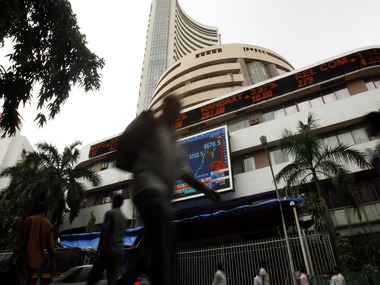The global and the domestic markets were mired with volatility in 2018. The trade war concerns among the world largest economies — the US and China — led to heightened volatility in the global markets. Quantitative easing (QE) withdrawal and subsequent four rate hikes by the US Fed led to an increase in the yield globally, thus affecting the returns from fixed income as an asset class. The strengthening of the dollar index and the emerging market currency rout added to the investors woes. Other factors that posed as a challenge for the global markets were the UK Brexit deal, crash of crypto currencies, and the Chinese economy slowing down, Organisation of the Petroleum Exporting Countries (OPEC) looking for oil production cuts and sanctions on Iran which led to higher oil prices. Though concerns still linger, a visible settlement to the US-China trade war issues are round the corner, with a 90-day truce has already been declared. If we look closely, most of the concerns are not new and have been present over a long period of time, which generally smoothen out over time. Any corrections during such volatile phases always provide a good opportunity to invest at lower prices, which subsequently lead to higher returns. [caption id=“attachment_2407212” align=“alignleft” width=“380”] Representational image. Reuters[/caption] On the domestic front, major developments like the introduction of long-term capital gains tax (LTCG) on equities coupled with re-categorisation of mutual fund schemes halted the equity market run of 2017. Mid-cap and small-cap stocks (BSE midcap and small cap indices lost ~13 percent/~24 percent respectively on YoY basis) were the major losers, while the large cap index closed mildly higher by ~6 percent as portrayed by the Sensex YoY returns. The weakening of rupee by ~9.5 percent (YoY basis), jump in crude oil prices and the benchmark yield curve moving sharply northward together with foreign institutional investor (FII) capital outflow added pressure on the twin deficits in the initial part of 2018. Investor sentiment dampened as the Punjab National Bank (PNB) scam got unearthed and the IL&FS fiasco raised its fangs, proving detrimental to both debt and equity market. We anticipate mild volatility during the first half of 2019, due to the forthcoming general elections while the second half of 2019 should remain fairly stable. Stronger macros like stable currency, benign inflation, and expected GDP growth of 7.3-7.8 percent are perfect recipe for a positive equity market move. Expectations of stronger earnings growth in 2019 (~20 percent), bond yields starting to move lower and renewed inflows of funds by FIIs and higher domestic participation in equity should result in above average returns from the equity market. We are overweight on financials, auto and auto ancillaries, consumer durables and capital goods, while being neutral on the IT and the pharma space. Metal and minings and infrastructure space may prove to be the surprise in the pack. We prefer large caps over midcaps and suggest a staggered approach to equity investment to ride the volatility. We are bullish on the financial services sector as we expect credit growth offtake to sustain in 2019 and liquidity returning to normalcy among non-banking financial companies (NBFCs) in the second half of 2019. With the bond yields softening, treasury gains for the banking stocks are on the anvil. As the loan growth picks up with the margins remaining strong, it will add to the profitability of the banks. Selective public sector banks (PSBs) may become a good buy, as mergers and bank recapitalisation will ensure a robust balance sheet and greater reach. As most of the non-performing assets (NPAs) have been recognised and recovery process has been initiated with the implementation of the Insolvency & Bankruptcy Code (IBC), the NPA recovery is not only a big positive for the banking sector but also for the economy in general.
The rural consumption thesis holds strong for the economy with over 50 percent contribution to India’s GDP and around 50 percent contribution towards consumption. 2019 being the election year, anticipation of sops and benefits for the rural masses are high, which are potential drivers for consumer durables, fast-moving consumer goods (FMCG) and the automobiles sector.
Adequate monsoon in 2018, higher minimum support prices (MSPs) promised by the government and generation of jobs in the rural economy will help the rural demand going strong. Anticipation of private capex is also on the rise with oil and gas, metal, mining and capital goods sector being the main beneficiaries. Strong demand in steel had led to capex plans for most of the major steel players in the country. The government capex plan is already strong and going forward is bound to increase thus forming a base for the private capex. Though we witnessed a temporary slack in the automobile sector, we anticipate a turnaround by the second half of 2019 while the auto ancillary sector will continue to post robust numbers. With replacement demand intact and the anticipated rise of the volume growth in automobiles, we are bullish on the sector. Going forward, we feel the government’s focus on rural and urban infrastructure will continue, thus creating more jobs, add to more productive assets and maintaining the high rural demand which will have a positive effect on the entire economy.
To conclude, we remain overweight on equity with a suggested staggered investments approach mainly in the large-cap stocks and mutual funds. On the fixed income side, we do not foresee any pressure on the yield curve, but taking a conservative approach we recommend investment in fixed maturity plans (FMPs) and short-term mutual funds.
On the real estate side, we are optimistic about the commercial assets and suggest investment through pooled vehicles as we foresee a change in cycle. Judicious mix of asset classes as per the risk profile of the investor is recommended, to reduce risk and optimise the returns. (The writer is CEO, Karvy Private Wealth)


)

)
)
)
)
)
)
)
)



